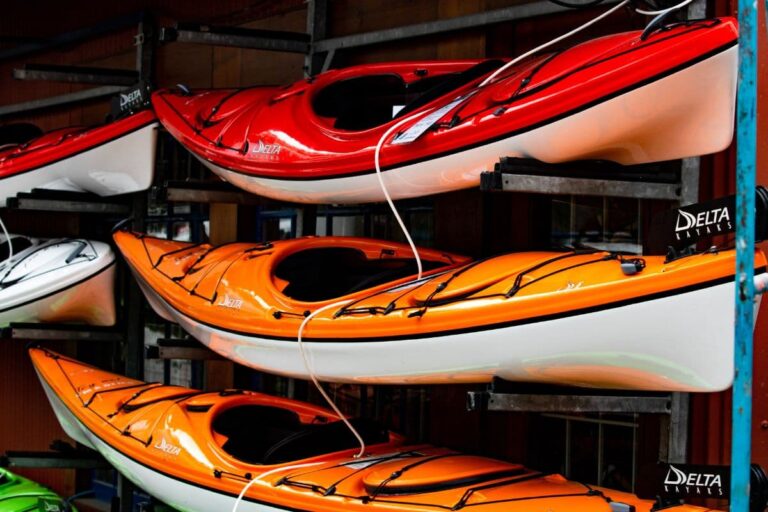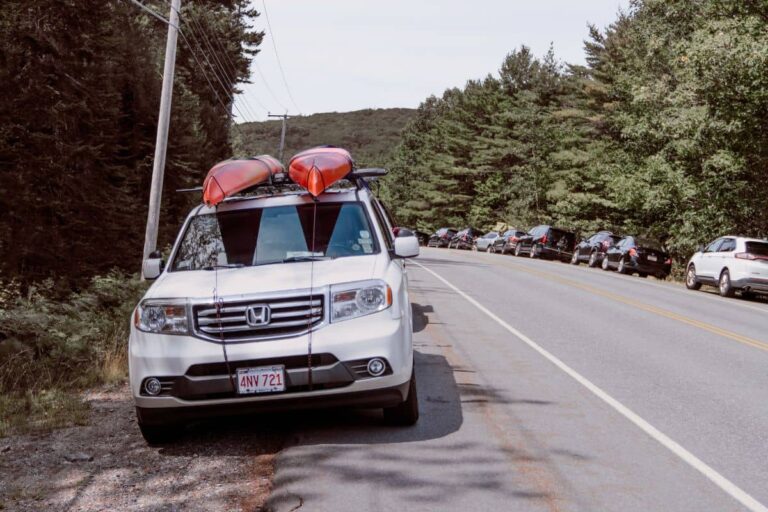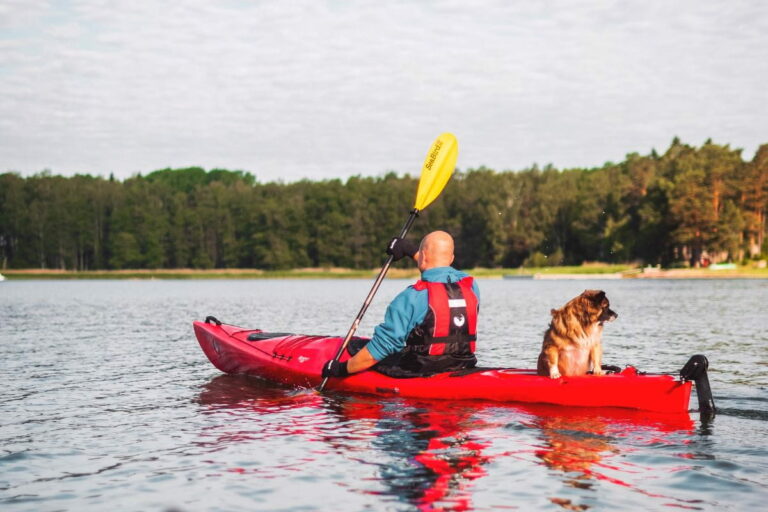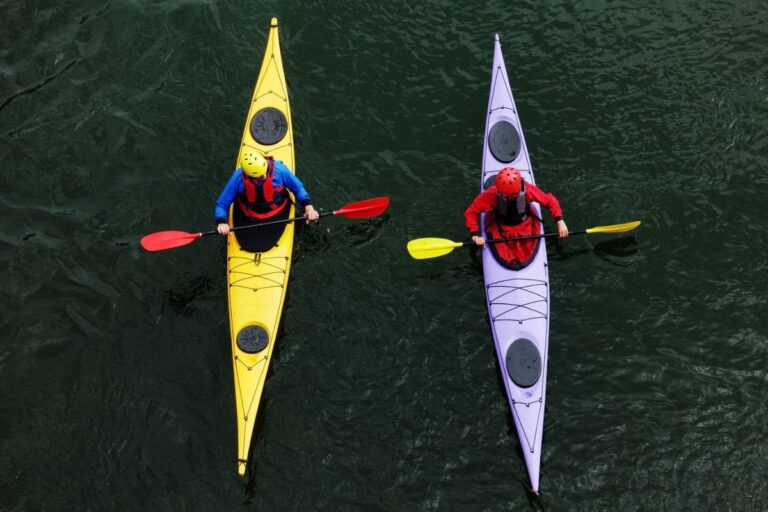How To Transport Two Kayaks Without A Roof Rack? (2 Methods)
Outdoor sports enthusiasts know how helpful a car roof rack can be.
You can fit almost anything up there you need to, including a kayak or canoe, tent, luggage, backpacks, and other assorted gear.
But what if you don’t have a roof rack for your vehicle?
The good news is, if you don’t have a roof rack, with a little ingenuity, it is still possible to transport up to two kayaks.
By investing in a few items, including cam straps, ratchet straps, and pool noodles or foam blocks, you can transport two kayaks on top of your vehicle safely. Alternatively, you may also consider purchasing a kayak trailer for easy transportation without a roof rack.
A trailer may also be especially useful if your roof isn’t wide enough for one or more kayaks, or if you’re worried about your kayak’s hull being damaged on top of your vehicle.
Two Primary Methods For Kayak Transportation Without A Roof Rack
Once you’ve outlined your strap plan, it’s time to figure out exactly what you’ll be placing your kayak on before strapping it in.
Both kayak outfitters and kayakers are proponents of two main options: pool noodles and foam blocks.
Both of these items are affordable methods that provide adequate padding on top of your vehicle, in place of a roof rack.
Pool Noodles

Yes, we’re talking about the pool noodles you use in a swimming pool.
Make sure the type of noodles you use have a hole in the middle, are thick, and very heavy-duty.
The length will depend on the various widths of different vehicles – the noodles should be long enough to fit across the entire width of your vehicle’s roof.
For the pool noodle method, you’ll need at least two pool noodles (possibly three, depending on the size of your kayak and your vehicle), along with three square stainless steel poles.
These poles should fit inside the hole of each pool noodle to provide stability.
First, thread your ratchet straps through the center of each pool noodle, then do the same with the poles.
Again, make sure your straps are even and that the noodle is fully covering the pole resting on your car.
Place the prepared noodles about three feet apart on top of your car (one in the middle, one toward the front of your vehicle, and one in the rear).
Leave your doors open, join the two sides of the ratchet straps, and tighten to secure each noodle.
Place the kayaks on top of the noodles, and connect them using more ratchet straps, passing them over your kayaks in the same place as your noodles.
Your kayak’s cockpit should be positioned roughly in the center of your car.
Twist the straps and connect them, and then secure the bow and stern by threading a ratchet strap through your kayak’s carry handles.
Foam Blocks
Another popular method involves using foam blocks.
This is another suitable method for traveling a short distance with your kayaks, similar to using pool noodles.
First, buy two foam blocks that measure at least 20”x4”x 4”, making sure they are not wider than your vehicle.
The blocks can be rectangular or have a V-shape in the middle.
Make sure you use at least four cam straps to secure the top of the blocks.
Measure your boats and use that number to see how far apart your blocks need to be.
Once your blocks are secured, strap the kayaks down onto them and secure them with multiple cam straps by using the same method of opening the doors (mentioned above) and tying each end together.
Then, check to ensure that they’re secure, and finish by tying down the bow and stern to your front and rear bumpers.
Make sure the strap is secured to an anchor point under your bumper.
By using either of these two methods, you’ll be able to easily transport one or two kayaks wherever you need to go.
Safe Kayak Transportation Without A Roof Rack
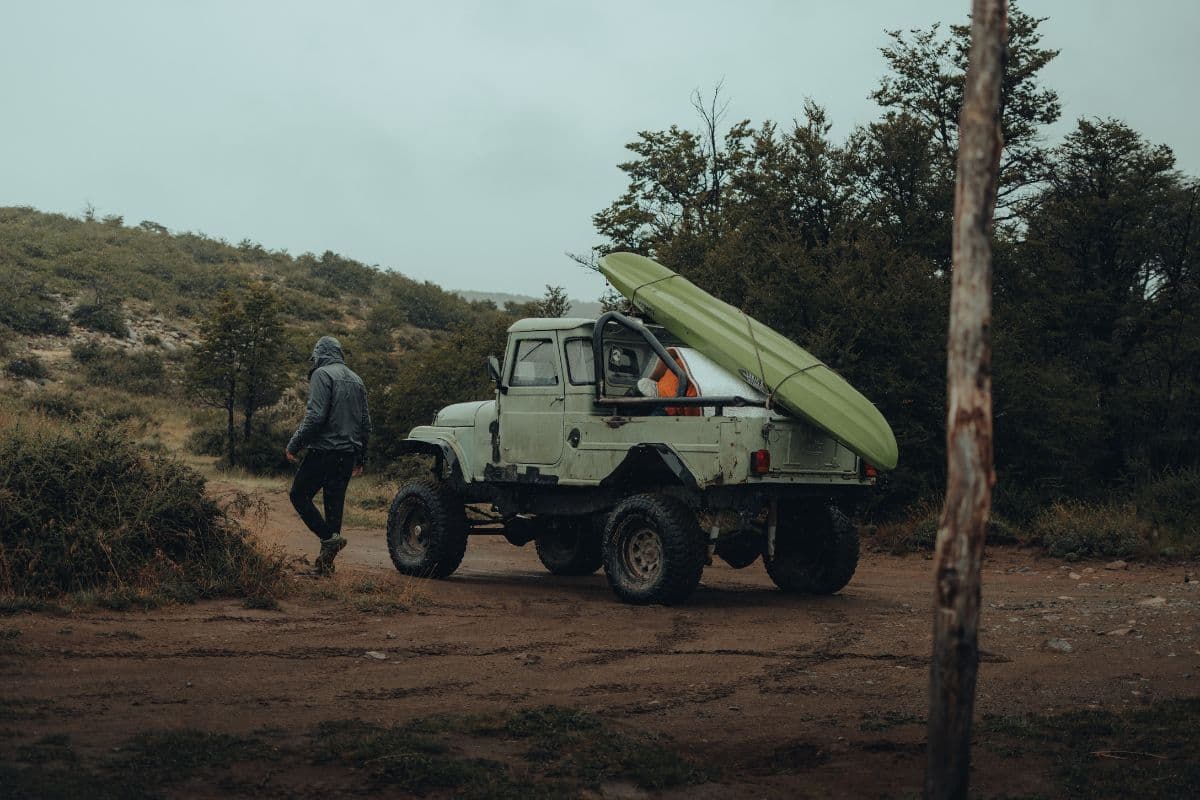
The best and easiest way to haul the average size kayak (which is about 10 feet long) is to load it on top of your car.
Whether you have a roof rack or not, it’s important to review the basics of kayak transportation to ensure you’re doing so as safely as possible.
Here’s a helpful checklist of some things to consider:
- Make sure your vehicle can carry the weight of your kayak(s) – you can usually find the weight-bearing capacity in your vehicle’s instruction manual.
- Don’t worry if your vehicle is small – there are still options for transporting kayaks using a more compact vehicle, as long as the boats are properly secured.
- When you’re ready to lift your kayak onto your vehicle, don’t forget to get help from a partner – most kayaks weigh at least 60 pounds, and the movement required to lift it overhead can damage your back or neck if not done correctly or with help.
- Once you strap the kayak(s) on (we’ll get to exactly how in a bit), be sure to double- or triple-check that it’s strapped on tightly and securely.
What You’ll Need Without A Roof Rack
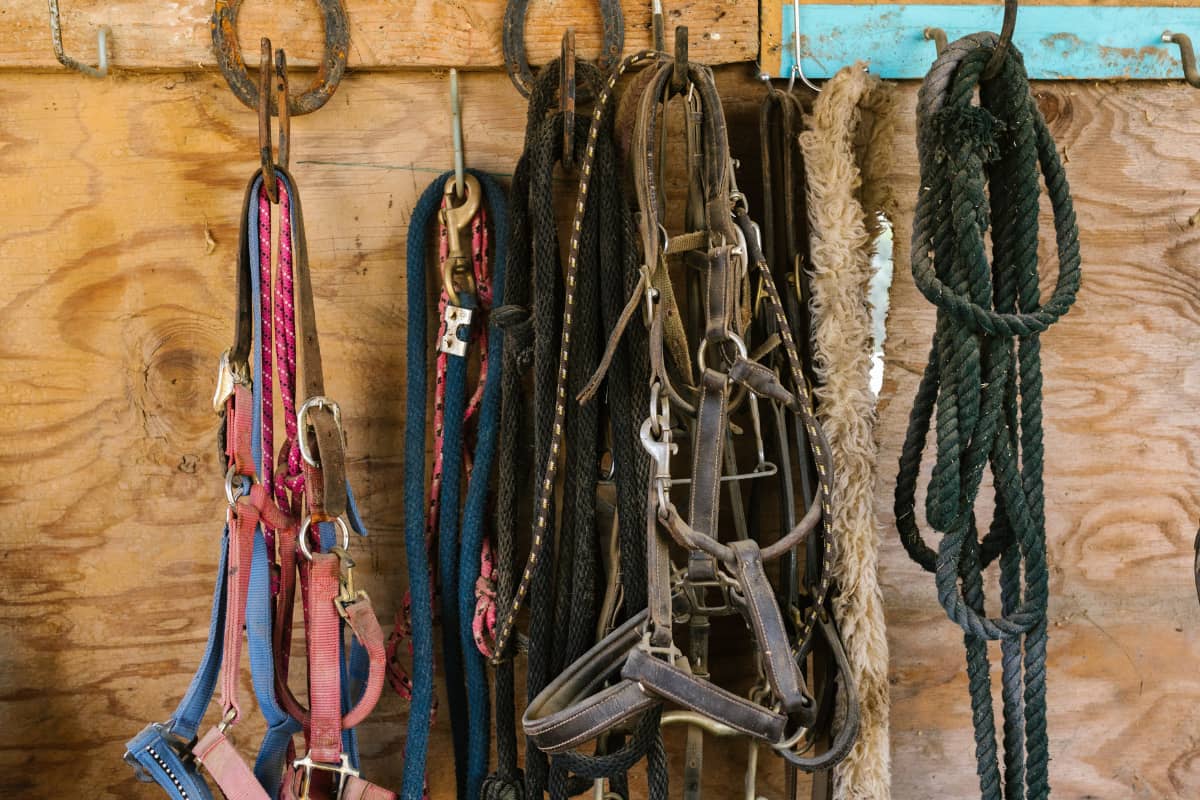
In order to transport kayaks without a roof rack system, the first things you’ll need are straps.
Many experts agree that it’s best to use both cam and ratchet straps (especially when transporting kayaks over long distances) – these can be found at local hardware stores.
Other methods, like a bungee cord and rope system, are generally not recommended for transporting more than one kayak.
A bungee cord usually can’t secure the kayak tightly enough, and rope can be challenging to tie.
A cam strap, or cam buckle strap, is a tie-down strap that provides security through hand-tightening.
You can use cam straps alone to secure your kayak to your roof, but many kayakers recommend using cam straps along in addition to ratchet straps.
A ratchet strap is another type of tie-down strap that usually includes a system of connectors, including rings and hooks, to tie down objects.
Since these straps have hooks and buckles that are easier to make very tight, they are an essential component of any DIY kayak rack.
Using both types of straps together is ideal for kayak transportation.
But if you can’t do that, consider using cam straps over ratchet straps – just be sure not to over-tighten your straps, and ensure your kayaks can’t slide backward or forward.
Can You transport kayaks upside-down?
Yes, you can transport kayaks either upside-down or right-side-up (with or without a roof rack.)
For example, if you’re transporting two kayaks, one can be upside down while the other is not.
How often should You check on the kayaks while traveling?
Once you’re on the road, it’s a good idea to schedule a few stops along the way (especially on a long journey) to make sure your kayaks are still stable and secure.
How can you tell if a kayak is too big for a car?
A general rule: The minimum size of your vehicle should be long enough that no more than half of the kayak is sticking out or off of your vehicle in either direction.
For larger cars, this will rarely be an issue, but it’s important to factor in if you have a smaller vehicle.
Conclusion
If you don’t have a roof rack for your vehicle, don’t worry – there are still safe ways to transport your kayaks!
You can create a DIY rack using affordable materials (like pool noodles or foam blocks, and straps), or consider using a kayak trailer.
Whichever option you choose, make sure your kayak are secured properly before heading off to your next water adventure!
Table of Contents

